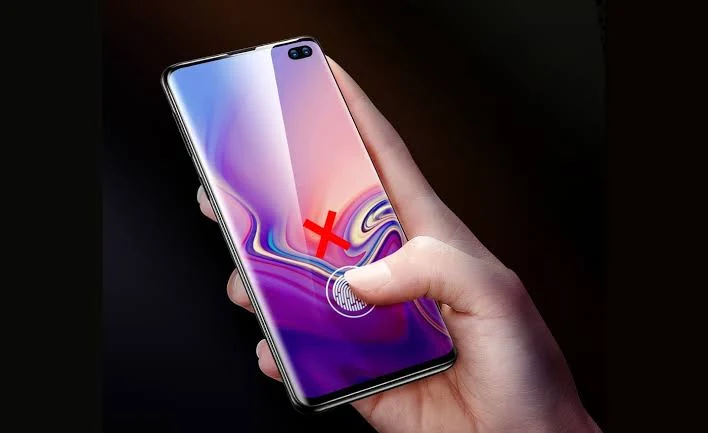Increase your phone's speed in just a few simple steps
 |
| Google images |
Depending on your device, you may only see 3D Touch or Haptic Touch. If you don't want vibration to touch keys or icons on your device's screen, you can turn it off. Haptic Touch is a feature that allows you to set how long pressing the screen will trigger an action. This setting controls the amount of time it takes for a screen tap to become a tap and hold.
Decrease the slider to make the touchscreen less sensitive and harder to touch. If you need a softer touch because you can't move the screen, set the screen sensitivity to a higher value. You can increase or decrease the screen sensitivity of Galaxy S7 Edge, Samsung Galaxy S7 using the above methods.
You can adjust screen sensitivity in your S7 by simply searching for "screen sensitivity" in the Google Play Store and downloading the top rated app. We found a way to fix and adjust the sensitivity of the Samsung Galaxy S7 touchscreen. Sometimes the Samsung Galaxy S7 is less sensitive than we would like, mainly because of the protective film on the screen.
If you choose a screen protector for your Galaxy S9 from our recommended options, you probably won't have any issues with the touch sensitivity of the display. For those who have to press harder than usual on the display after installing a screen protector on their Galaxy S9 or S9+, Samsung has built in an option to increase the touch sensitivity of the screen to fix this. Google added a switch to the settings to improve touch sensitivity (at least on the Pixel 4), and it promises better touch response when using the device through screen protectors and the like.
How to change the touch settings on your iPhone and even iPad
 |
| Google images |
Sometimes you find that the touch sensitivity is too sensitive or not sensitive enough for your taste, you can change it with a few simple steps on Android and iPhone. We'll show you how to change the touch settings on your iPhone and even iPad. With the tips we've laid out in this article, you'll be able to make your touch screen settings more suitable for your needs, whether you want to or are forced to. Now that you know a few reasons why you might need to change your iPhone's touch sensitivity settings, we can see how to change three separate areas of your iPhone's touch settings.
Another way to change your iPhone's touch preferences is to change how the home button works. If you're having trouble using the touchscreen on your iPhone, you can change how your device responds to touch by turning on or configuring the following features. Adjusting the sensitivity of your iPhone 12 or iPhone 13 series can help you make it happen and make your phone work as you want and at your command. Here's how to change the touchscreen sensitivity on your smartphone, whether Android or iPhone.
How to change the touch sensitivity on Android?
 |
| Google images |
You can change the touch sensitivity on Android by going to the language and input settings. Well, you know that all smartphones, including Android and iPhone, have default touch sensitivity, which is usually good enough for most people. Most smartphones come with a touch interface, so users can interact with the phone using simple gestures such as dragging, swiping, or swiping. Due to the development of multi-touch technology, many users will use two-finger gestures.
One of the most common ways to change touch settings is to change the screen sensitivity. Touch adaptation lets you customize how your device's screen reacts to your touches, swipes, and other gestures on the screen. With Super Touch, your screen will respond to your taps and swipes without any of the lag or lag caused by some apps while you're running. From the menu in Super Touch, you can adjust and adjust the operating sensitivity of your device.
If you have an older Android phone, you can try dialing *#*#2664#*#* to access the touch sensitivity options. This option is not available on Android devices starting with Android 5 Lollipop and higher. If you still feel that the touchscreen is not working perfectly, too slow or too fast, and you want to change the touch sensitivity of your phone, you can do this.
Pressing the screen or buttons repeatedly will only make things worse when your Android freezes due to an app crash or when all the RAM is used up. At times, you may have seen your Android device struggle to load home screen content when you are using a heavy app or playing games. All gamers on smartphones have at one point or another complained about the lag of their devices or the long response time to pressing the screen. It's actually important to understand that two devices with the same refresh rate can have different touchscreen response times.
Also important to gamers is the touch sample rate, or touch refresh rate, which is the speed at which the screen perceives touch. If the touch sample rate is 120 Hz, this means that the smartphone can process and perform input twice as fast, even if the screen updates "only" 60 frames per second. Touch detection is the time it takes for a device to detect a user's touch input.
If you use the initial touch position, your iPhone will register a touch where you first placed your finger. In this application, the entire display turns dark black and then when you touch it with your fingers, one pixel turns white, letting you know that the screen is registering your touch in that part. You can slow down the click speed, choose whether to place your finger on the Home button to unlock your phone, and Siri settings




0 Comments